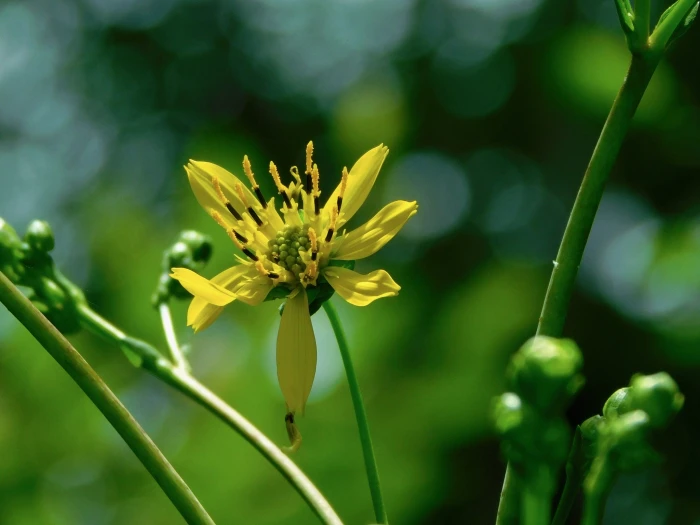Kidney-Leaf Rosinweed
(Silphium compositum)
Kidney-Leaf Rosinweed (Silphium compositum)
/
/

Michael J. Papay
CC BY 4.0
Image By:
Michael J. Papay
Recorded By:
Copyright:
CC BY 4.0
Copyright Notice:
Photo by: Michael J. Papay | License Type: CC BY 4.0 | License URL: http://creativecommons.org/licenses/by/4.0/ | Rights Holder: Michael J. Papay | Publisher: iNaturalist | Date Created: 2022-07-14T11:49-07:00 |

























Estimated Native Range
Climate Requirements for Chengdu, China
| This Plant | Your Site | Plant Suitability for Your Location | ||
|---|---|---|---|---|
| • Precipitation | 40" - 82" | 38" | Aquatic | Aquatic |
| • High Temp. | 77°F - 94°F | 86°F | Your summer temperatures are normal for this plant. | Excellent |
| • Low Temp. | 20°F - 58°F | 37°F | Your winter temperatures are normal for this plant | Excellent |
This plant should grow well at your location with about N inches per year (Y minutes per month) of irrigation.
Summary
Silphium compositum, commonly known as Kidney-leaf Rosinweed, is a deciduous perennial herb native to open woodlands and prairies of the southeastern United States. It typically grows to a height of 3-6 feet (0.9-1.8 meters) and spreads 2-3 feet (0.6-0.9 meters) wide. The plant is characterized by its large, kidney-shaped basal leaves and tall, sturdy stems topped with bright yellow composite flowers that bloom from mid-summer to early fall. The flowers are quite showy and attract a variety of pollinators.
Kidney-leaf Rosinweed is valued for its striking foliage and cheerful flowers, which add a splash of color to wildflower gardens, meadows, and naturalized areas. It is a low-maintenance plant that is drought-tolerant once established and thrives in full sun to part shade. It prefers well-drained soils but is adaptable to different soil types. While not commonly used in formal garden settings, it can be an excellent choice for restoration projects and pollinator gardens. Potential problems include occasional leaf spots and rusts, but these are generally not severe. It is not known for aggressive roots or significant disease issues.CC BY-SA 4.0
Kidney-leaf Rosinweed is valued for its striking foliage and cheerful flowers, which add a splash of color to wildflower gardens, meadows, and naturalized areas. It is a low-maintenance plant that is drought-tolerant once established and thrives in full sun to part shade. It prefers well-drained soils but is adaptable to different soil types. While not commonly used in formal garden settings, it can be an excellent choice for restoration projects and pollinator gardens. Potential problems include occasional leaf spots and rusts, but these are generally not severe. It is not known for aggressive roots or significant disease issues.CC BY-SA 4.0
Plant Description
- Plant Type: Herb
- Height: 4-8 feet
- Width: 2-3 feet
- Growth Rate: Rapid
- Flower Color: Yellow
- Flowering Season: Spring, Summer, Fall
- Leaf Retention: Deciduous
Growth Requirements
- Sun: Full Sun
- Water: Low
- Drainage: Medium
Common Uses
Bee Garden, Butterfly Garden, Deer Resistant, Drought Tolerant, Low Maintenance
Natural Habitat
Open woodlands and prairies of the southeastern United States
Other Names
Common Names: Composite Rosinweed, Lesser Basal-Leaf Rosinweed
Scientific Names: Silphium compositum, Silphium compositum f. compositum, Silphium compositum f. orae, Silphium compositum f. orii, Silphium compositum subsp. compositum, Silphium compositum var. michauxii, Silphium elatum, Silphium elatum, Silphium laciniatum
GBIF Accepted Name: Silphium compositum